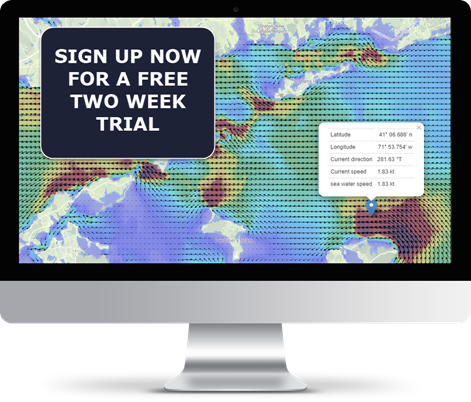The UK Hydrographic Office (UKHO) and France’s national hydrographic and oceanographic office, Shom, have launched what is arguably the most ambitious test of S-100 data standards yet. Their international sea trials programme, running under the International Hydrographic Organisation’s (IHO) coordinated testbed framework, is not just a technical exercise, it’s a glimpse into the future of maritime navigation.
Why S-100 sea trials matter for the future of navigation
From tides to tech — how Tidetech became a quiet force in ocean intelligence
Tidetech was featured in the Australian International Marine Export Group (AIMEX)/Australian Commercial Marine Group (ACMG) annual directory, launched at Metstrade 2025 in Amsterdam. Here's the story...
Topics: America's Cup, Shipping
Alantra’s report spotlights Tidetech in the race to maritime decarbonisation
If shipping companies are not making way on decarbonisation in line with the International Maritime Organisation’s (IMO) targets, then they're adrift. According to Alantra’s Maritime Decarbonisation Leaders report, the digital tide is turning fast.
Topics: speed optimisation, route optimisation, navigation, Shipping, ship efficiency
Discover Maritime Innovations — data-driven decisions for lower emissions
October’s Discover Maritime Innovations conference, hosted by the Maritime Emissions Reduction Council (MERC) in Sydney, was an excellent gathering of businesses and professionals focused on maritime industry decarbonisation.
Topics: speed optimisation, route optimisation, ship efficiency
Topics: Expedition, racing, English Channel, Adrena, navigation, yacht racing
Whitsunday Islands Tidal Model for Airlie Beach & Hamilton Island Race Weeks.
Topics: sailing, tides, Tidemap, grib, yacht race, yacht racing, Hammo, Hamilton island race week, whitsundays
Rolex Fastnet Yacht Race 2023Will you optimise the Tides? |
Topics: Expedition, racing, English Channel, Adrena, navigation, yacht racing
NEW Whitsundays Tidal Model: ready for Hamilton Island Race Week.
Topics: sailing, tides, Tidemap, grib, yacht race, yacht racing, Hammo, Hamilton island race week, whitsundays
Climate change: One slipping under the radar, the Thwaites Glacier
After the disappointing outcomes of the COP26 meeting in November to address the IPCC 6th Assessment requirements over the coming decades, a potentially more immediate existential threat to global sea level rise was discussed in a press conference at the American Geophysical Union Fall Meeting in December. Titled “The threat from Thwaites: The retreat of Antarctica’s riskiest glacier”, the hour-long presentation discussed the mid-term status of the International Thwaites Glacier Collaboration (ITGC) 5-year study into the stability, or rather instability, of the Thwaites Glacier or ‘Doomsday Glacier’ in popular terminology.
Rolex Sydney Hobart Yacht Race 2021: Where is the EAC?
Topics: Sydney to Hobart, sailing, East Australian Current, tides, optimised route, Tidemap, grib, yacht race, yacht racing












